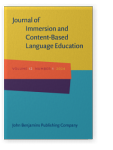Vol. 12:1 (2024) ► pp.101–124
Vol. 12:1 (2024) ► pp.101–124
A scoping review of the literature on content and language integrated learning assessment
Despite being an essential element of Content and Language Integrated Learning (CLIL), CLIL assessment has received scarce research attention and remains a relatively underexplored area. Since few review studies have been conducted in the field of CLIL assessment, this article constitutes the first attempt to synthesise both theoretical and empirical studies on CLIL assessment around the globe with a view to yielding implications for the understanding, design, and improvement of assessment in CLIL and providing suggestions for future research agendas. Based on a thematic analysis of 77 pertinent publications selected among 763 search results, this scoping review first identified three prominent research themes in CLIL assessment including assessment issues, assessment practices, and assessment frameworks. Subsequently, the review elaborated each theme and discussed some interesting patterns of the literature in great depth. The review concluded with suggestions on future research directions with a view to advancing the uncharted area of CLIL assessment.
Article outline
- 1.Significance of the review
- 2.Method
- 2.1Selecting the studies
- 2.2Thematic analysis
- 3.Findings
- 3.1Main issues of CLIL assessment
- 3.2CLIL assessment practices
- 3.3Conceptual frameworks for CLIL assessment
- 4.Discussion and implications
- 5.Concluding remarks
-
References
